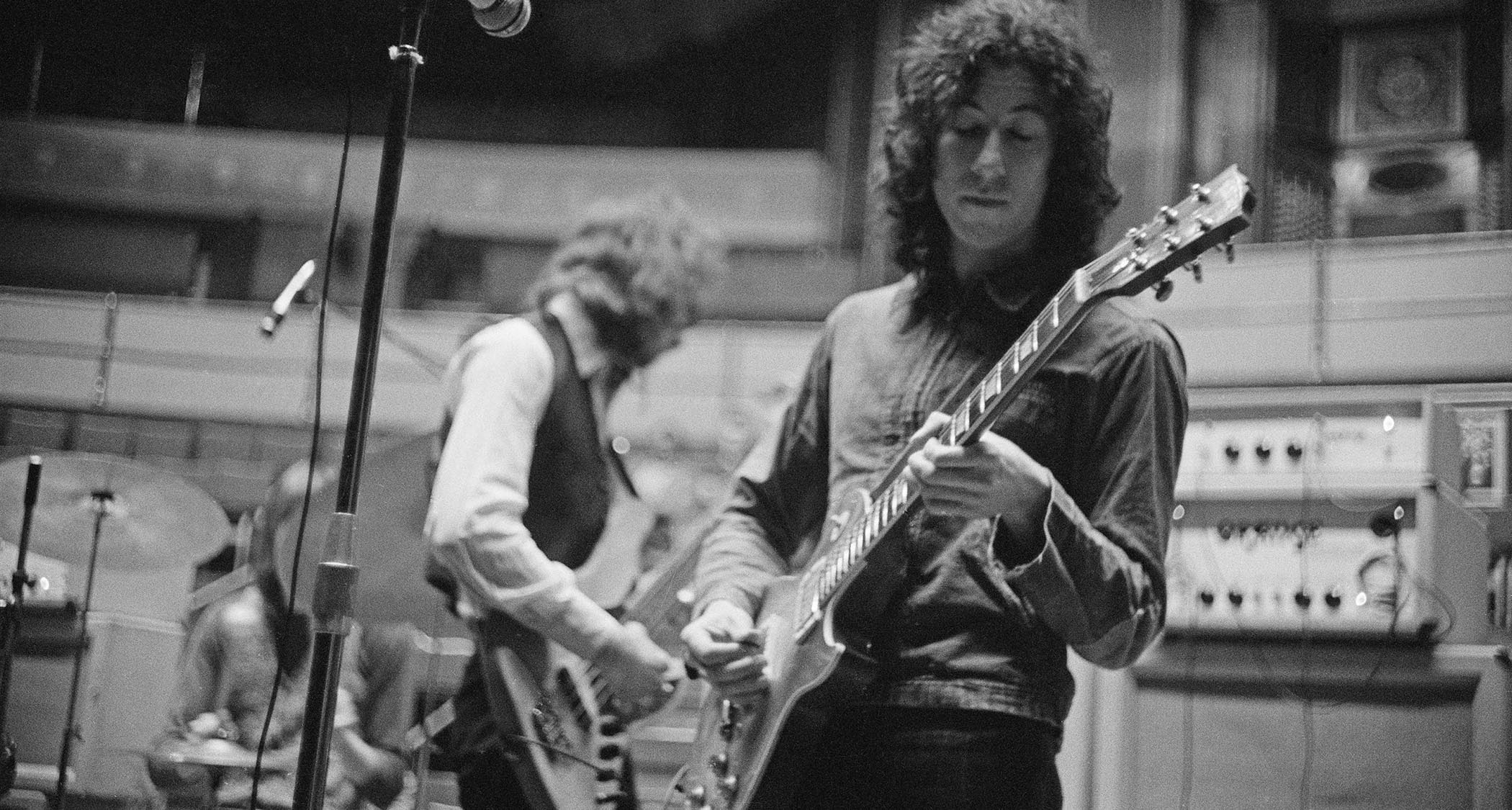
Peter Green was the founding member of Fleetwood Mac, and having put the band together, was generous enough to name it after the drummer Mick Fleetwood, and bass player John McVie, both stalwarts of the ’60s British blues scene and John Mayall alumni.
Green followed Eric Clapton in Mayall’s Bluesbreakers, a tough gig to take on, but B.B. King was famously quoted as saying that Green was “the only one to give me the cold sweats”.
A master of Chicago blues and also an innovator as a composer, Green was responsible for a number of imaginative hit songs, including The Green Manalishi, Black Magic Woman (also a huge hit for Santana), Albatross, and Oh Well.
However, in this lesson I will focus on a minor blues and an uptown major blues inspired tune. The examples focus on the minor blues and the sample solo switches to the major key.
It’s worth picking through the licks to get a feel for the kinds of melodic shapes and note choices that Green favoured, such as the use of the 9th degree and the straight minor pentatonic.
In the sample solo, I used a classic '60s blues approach of stressing the tonic major pentatonic on the I chord (A), then moving to the tonic minor pentatonic on the IV chord (D).
If you look carefully, you’ll see that I have generally altered the minor pentatonic by replacing the 7th degree with the major 6th. The major 6th of A minor pentatonic (F#) is also the 3rd of the D chord, so makes harmonic sense, particularly when you consider that the note G can be displeasing when held over a D or D7 chord (this is often called an ‘avoid note’, meaning that it’s not to be held for too long).
Green’s phrasing was possibly so musical because he was such a great singer; his phrasing on the guitar has a vocal quality and a real sense of pace and drama.
Peter’s treatment of the D# diminished 7th chord is worth noting. He often hits the root of that chord but then goes back to bluesy Am6 pentatonic ideas; his navigation of the chord changes was masterful.
Other than one example that shows some of the scale options over a bluesy sequence in A, the demos are all over a slow 12/8 groove, and the rhythms exploit the options within the subdivisions of a 12/8 pulse.
Don’t be overly concerned with working out the rhythms mathematically – if you’re not well acquainted with reading in 12/8, there’s no shame in referring to the video/audio. It’s certainly what Peter would have done!
Get the tone
Amp Settings: Gain 5, Bass 7, Treble 6, Reverb 4
Peter’s Gibson Les Paul was wired with out-of-phase humbuckers. It is not essential to replicate this but there’s a delicate quality to Peter’s sound with a cleanish British tone at its core. Peter worked his amps hard and that natural colouration is key. Effects were not a big part of Green’s world, but you might want to add quite a bit of reverb to get that airy sound.
Example 1
In our first example, we start by leaving a little space between the phrases. Be careful with the high bends as their pitch requires accurate targeting.
Example 2
Here we’re starting to use 1/16th-note triplets for variety. In bar 3, we start to get a little more bluesy with the use of the C natural note (minor 3rd).
Example 3
This example starts in a fairly common pentatonic blues box shape. The flourish at the end of the bar sounds not unlike the kind of lines that Eric Clapton was playing around the time. Green saw him live with The Bluesbreakers and was deeply affected by his playing.
Example 4
This one starts on the V chord. It’s interesting to note how just stating the root of the V chord (C#) really gives a sense of making the changes.
Example 5
Here we see some of Peter’s scale choices. The A minor pentatonic can be changed to A minor 6 pentatonic on the D chord for a little more finesse. The blues scale works over A7 and D7 if used carefully.
Solo
This final piece amalgamates much of what has been covered earlier, putting it all together for a musical performance. Looking at it overall, you will notice how much colour and variety is achieved from just a few positions on the fretboard: 9th fret zone and 12th fret zone.
This is where the guitar can be most vocal – the notes aren’t too low to get lost in a band mix or too searing and screaming. Add in blues notes, bends and legato, and it’s a wealth of emotion and tasty soloing!







